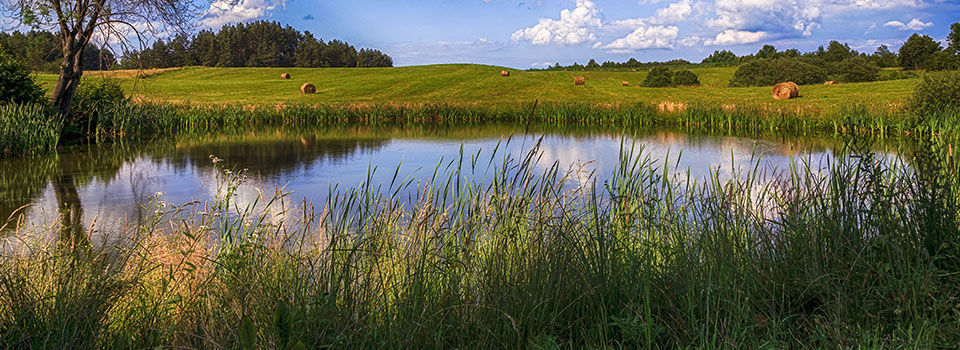
Most Kansas ponds have a lifetime of about 18 years, says K-State Research and Extension fisheries specialist Joe Gerken.
K-State specialist offers advice on how to care for ponds
Every pond ‘has a dream of being a prairie,’ says Gerken
At a glance: K-State Research and Extension outdoor specialist Joe Gerken offers tips on keeping ponds healthy.
More information: Joe Gerken, 785-532-1418, gerkenje@ksu.edu
Related: Waterers and Watering Systems: A Handbook for Livestock Producers and Landowners | Healthy Cattle Need Healthy Water | Identification and Management of Blue-Green Algae in Farm Ponds
June 19, 2024
By Lisa Moser, K-State Research and Extension news service
MANHATTAN, Kan. — For many, gathering with friends and family near a pond can be a fun way to spend a summer evening, but without proper care, those opportunities may be limited, said K-State Research and Extension fisheries specialist Joe Gerken.
“Every pond in the world has a dream of being a prairie and eventually it will turn into one if we leave it alone,” Gerken said, noting that this happens when the pond fills up with sediment over time.
“As the water comes in, it carries with it fine sediment particles that make the pond become more shallow and then the nutrients build up, leading to excessive plant growth and stagnant, stinky water,” Gerken said.
He said most Kansas ponds have a lifetime of about 18 years, but with proper care, they can last much longer than that.
To help with pond longevity, Gerken recommends looking at the area right around the ponds to make sure there are established plants that will hold back the sediment.
“When you look at the edge of the pond, it should have a slope of three feet for every one foot you go out into the pond, and that is important because if it is too shallow the sunlight will hit the bottom of the pond, causing plant growth,” Gerken said.
Gerken also suggests assessing the area away from the pond.
“Often we think about the pond itself, but by going upstream in the watershed, we can help the pond by establishing vegetation in the valleys, ravines and creeks flowing into the pond and limit the sediment,” Gerken said.
Gerken advises landowners to look at the water itself. If the water is brown and murky, it can indicate sediment buildup.
“A lot of times, trusting your intuition when looking at the pond is a great place to start and make adjustments if it starts looking bad,” Gerken said.
***

K‑State Research and Extension is a short name for the Kansas State University Agricultural Experiment Station and Cooperative Extension Service, a program designed to generate and distribute useful knowledge for the well‑being of Kansans. Supported by county, state, federal and private funds, the program has county extension offices, experiment fields, area extension offices and regional research centers statewide. Its headquarters is on the K‑State campus in Manhattan. For more information, visit www.ksre.ksu.edu. K-State Research and Extension is an equal opportunity provider and employer.